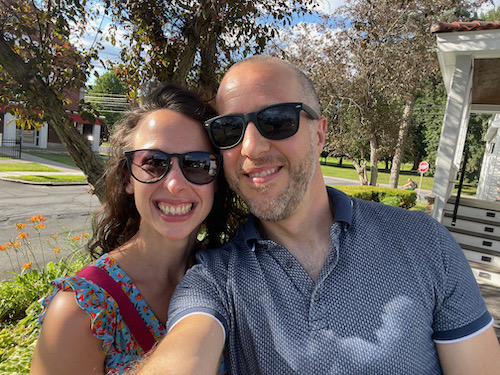How to sound good
When I was young, I hated my voice. I hated my voice so much that I was convinced that my best option was to become a mime.
But before you go running to the hills, terrified that this is about to devolve into a tug of war with an imaginary rope, hear me out (yes, I, too, see the irony). I thought that I was destined to become a mime NOT because I had some affinity for miming, striped shirts, face-paint, or exaggerated eyebrows, but rather I thought that I was destined to become a mime because — in terms of being heard — it was the best option available. “How can I ever speak well when I sound this bad?” I hated the words coming out of my mouth. I was trapped in a glass box of my own making, cut off from my words, and disconnected from my voice.
The pleasure of sound
Fortunately, what saved me from a mime-fatale was a joy for singing. Anyone who has ever belted a power ballad in the shower will agree (and here’s Bon Jovi singing “Someday I’ll be Saturday Night” to inspire your next performance…), whether done well or poorly, singing is a pleasure. Naturally, both singing and speaking depend on the same system: your voice. So how can something that feels so good on the one hand (singing) make you sound so bad on the other (speaking)?
Why you hate how you sound
Hating your own speaking voice is so common that it’s supported by both physiology and psychology (see: Neel Bhatt by way of Nashia Baker). Simply, each of us hears our voice in a unique way (here’s a short video explanation). From the perspective of other people, your voice vibrates through the air when you speak. From the perspective of your own ears, your voice vibrates through your cheek bones. What you hear therefore is different than everyone else. So when you hear a recording of yourself and you’re like, “Ugh, that’s not me!” or, “Ugh, I sound awful!” rest assured: you’re not alone. This experience is so common, it even has a name.
There’s nothing wrong with how you sound. It’s simply cognitive dissonance. What you hear doesn’t match how you think you sound.
Replace “I hate the sound of my voice” with “speaking well”
So what’s to be done? Luckily, there are many things that you can do. Below are four steps to get you started.
How to sound good in four easy steps
STEP 1 – Listen to yourself. And listen to yourself regularly.
Condition your ears. Record yourself and listen to the playback. Do this daily. Make the recordings short. Make them simple. But most of all, listen to them. Listen to yourself. And know: you’re likely not going to like how you sound. At least, you’re not going to like how you sound at first. If this is indeed the case, good! That’s the idea. Keep going. The more you hear how other people hear you, the better you’ll get at accepting the difference between what they hear and how you hear yourself. There’s nothing wrong with how you sound. It’s simply cognitive dissonance. What you hear doesn’t match how you think you sound.
If you’d like to go a bit further, consider – what do you like about your voice? And what do you actually, tangibly dislike? Don’t judge this. For now, just take notes.
STEP 2 – Separate speaking from listening.
After you’ve developed a practice of listening to yourself, separate this practice from speaking. Another reason why many people don’t like how they sound is because they’re too busy judging themselves while they talk. So if you want to learn how to sound good, remove this wasted energy. Negative self-talk amplifies your negative self-image and prevents you from speaking up.
While I could say, “Stop that,” you and I both know that it’s not that simple. The voice of the critic is a part of the internal landscape. And the best way to combat the critic is to distract them.
STEP 3 – Distract your inner critic by enjoying how you sound.
If you enjoy making words and sounds, the person listening will enjoy the sounds, also. Speaking is a pleasure. Enjoy it. It’s much more difficult for your critic to critique when you’re having a good time.
A bonus strategy: SMILE when you talk. This really improves how you sound. Here’s NPR‘s take.
STEP 4 – Point your voice outside yourself.
Speaking well becomes easier when you’re less focused on yourself and more focused on someone else. At any given time, ask: who are you talking to? Speak to them. It’s much easier to talk to someone you know and enjoy than it is to talk to yourself. So when talking with strangers, talk to them “AS IF” they’re someone you know.
How to sound good when you talk to someone else
With all of the above in place, hopefully you’ve now forgotten about how much you dislike how you sound. Perhaps you’ve even stopped thinking about your voice altogether. Sounding good starts when you stop thinking about your voice and grows when start focusing outside of yourself.
Sounding good may take time, but the road to learn how to sound good is not as difficult as you might think. So listen to yourself. Enjoy the pleasure of making sounds. And focus on someone outside of yourself. Not only will you start to sound good, perhaps you’ll start speaking up with gusto.
The prerequisite to being heard is speaking. It is in your best interest to START.
You’re so much more than the way you think you sound…

